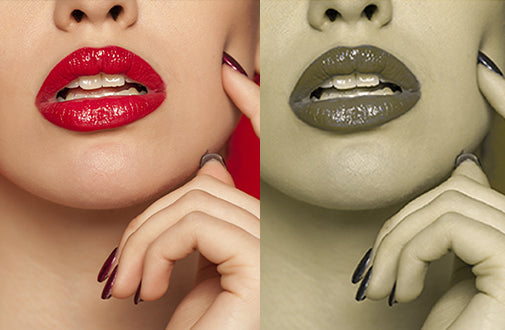Color blindness affects some 350 million people worldwide. Lawyers, museum curators, chemistry professors, teachers, law enforcement officers, doctors, grocery clerks, and students, among others, all must adjust their jobs and lives -- in large and small ways -- according to their color blindness accessibility needs. If you are colorblind or color vision deficient, a color-coded lab result may be unreadable, a painting muted and dull, a stoplight incomprehensible. It’s like walking through a blurry world without your glasses. Color blindness changes the lives of those affected more than you might think.
Think you might be color blind? Take a color blind test here.
One segment of the colorblind population that is often under-supported and misunderstood is colorblind women. You might be wondering, how many women are color blind? One in 200 women are color vision deficient. This means that while people with normal color vision see over one million shades of color, these women see only about 10% of those hues and shades. Red green color blindness in females (an umbrella category for deutan and protan color blindness) is the most common, causing color vision deficient people to see a less vibrant world. It also causes “color confusion” at times.
This means that in school, for example, some of a person’s most formative years, colourblind people can run into unexpected and inexplicable difficulties. Because of a lack of testing, young women, more often than men, can go years without realizing that some difficulties they encounter in school are due to color blindness. According to a recent survey of colorblind women by EnChroma, maker of cutting-edge colorblind glasses, color blindness can have a negative impact on educational experiences. Nearly 25% (18 of 82) of female respondents did not learn they were color blind until after the age of 15. The average respondent learned when she was 11 years old. “Even my color blind relatives didn’t believe I was color blind because I’m a girl and thought I just wanted attention, so I didn’t get diagnosed until high school,” says Piper Bodden, a museum curator. One woman did not learn she was color blind until age 44. In the survey, 81% of women believe they endured extra struggles or delays before doctors, educators or their parents suspected and/or accepted that they were colorblind. Two-thirds were teased in school for being color blind. Because color blindness is relatively uncommon in women, nearly half say they face more challenges than color vision deficient men.
EnChroma user Harlee Sharp sees the full spectrum of color for the first time through EnChroma color blind glasses.
These statistics point to issues that go well beyond color blindness, but simple steps can and should be taken in our schools and workplaces to improve the lives of our colourblind women and men. EnChroma and EnChroma color blind glasses are a small part of that effort. EnChroma’s cutting-edge color blind corrective glasses combine the latest in color perception, neuroscience and lens innovation to alter color deficient vision. The EnChroma Color Accesibilty Program brings colorblind glasses to museums, school districts, and state parks across the country so that more women and men, young and old, are able to explore the world in its intended color and vibrancy. The National Institutes of Health, recent studies from France’s INSERM Stem Cell and Brain Research Institute and the University of California, Davis, as well as the thousands of color blind women who’ve tried EnChroma glasses, agree that EnChroma glasses are the best colorblind glasses on the market today and the only glasses backed by science. If you’re a color blind woman, or know of someone who is, try our glasses. You have 60 days to return them for a full refund if they don’t work for you so there is nothing to lose!
EnChroma earned the 2016 Tibbetts Award from the U.S. Small Business Administration in recognition of its innovative impact on the human experience through technology, and the 2020 Innovation Award in Life Sciences from the Bay Area’s East Bay Economic Development Alliance.
Photo of Emma Cornbower, CoFounder and Game Developer for Digital Strawberry LLC, wearing EnChroma glasses, courtesy of Emma Cornbower



